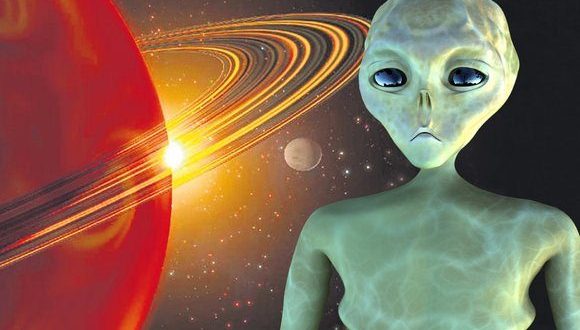A team of researchers, including Dr Mikko Tuomi of the University of Hertfordshire, have discovered 60 new planets orbiting stars near the Earth’s solar system, as well as evidence that there could be as many as 54 more on top of that. This could mean almost 120 new planets! This is a drawing of Gliese 411b, one of the 60 new planets.
Gliese 411b is a hot super-Earth with a rocky surface located in the fourth nearest star system to the Sun, making it the third nearest planetary system to the Sun. The significance of its discovery demonstrates that virtually all the nearest stars to the Sun have planets orbiting them. Planets that could be like Earth.
The results are based on observations taken over a 20 year period by US astronomers using the Keck-I telescope in Hawaii as part of the Lick-Carnegie Exoplanet Survey. During that time the team obtained almost 61,000 individual observations of 1,600 stars. Dr Tuomi, who was the only European-based researcher working on the project, led the group’s data analysis efforts that revealed the existence of the newly reported planets.
Dr Tuomi, from the University of Hertfordshire’s Centre for Astrophysics Research, said: ‘It is fascinating to think that when we look at the nearest stars, all of them appear to have planets orbiting them. This is something astronomers were not convinced about, even as little as five years ago. These new planets also help us better understand the formation processes of planetary systems and provide interesting targets for future efforts to image the planets directly.’
Crowning achievement as an Astronomer
The Lick-Carnegie Exoplanet Survey was started in 1996 by internationally renowned astronomers Steve Vogt and Geoffrey Marcy from the University of California and Paul Butler, from the Carnegie Institute of Science, in Washington. Dr Butler said: ‘This paper and data release is one of my crowning achievements as an Astronomer. It represents a good chunk of my life’s work.’
For over two decades the Lick-Carnegie survey has steadily increased scientists’ understanding of planets beyond the Solar System by enabling them to study the tiny wobbles of nearby stars caused by orbiting planets.
Dr Tuomi added: ‘Keck-I telescope and its instruments have been wonderful tools in establishing the current consensus that virtually all stars have planets orbiting them. These new discoveries will further help us characterise the population of planets in the immediate Solar neighbourhood.’
The group’s results were based on measuring small periodic changes in the target stars’ colours, indirectly revealing the existences of the planets. They detected the signatures of planets using the iodine cell radial velocity technique, which superimposes spectral lines from an iodine gaseous absorption cell onto the stellar absorption lines.
Hundreds of new planets
While the lines of the star move very slightly in response to orbiting bodies like planets, the iodine lines do not move, providing a precise reference point.
This radial velocity method has been used to discover hundreds of new planets orbiting nearby stars, including the recent discovery of Proxima b orbiting the nearest star to the Sun, Proxima Centauri, a discovery Dr Tuomi was also involved with.
Another aim of the astronomers was to democratise the search for planets. By making all the data taken with the Keck-I telescope publicly available, it ensured that the possibility for anybody to verify the team’s results by simply re-analysing the data and seeing the planets’ signals themselves.
Dr Tuomi added: ‘These results are possible thanks to the great efforts by the giants of the field, such as Paul Butler and Steve Vogt in painstakingly making observations over the years and developing instruments enabling the discoveries. The Keck planet survey has become an intergenerational project that keeps yielding important discoveries more than 20 years after it was initiated.’
Agencies/Canadajournal
 Canada Journal – News of the World Articles and videos to bring you the biggest Canadian news stories from across the country every day
Canada Journal – News of the World Articles and videos to bring you the biggest Canadian news stories from across the country every day



